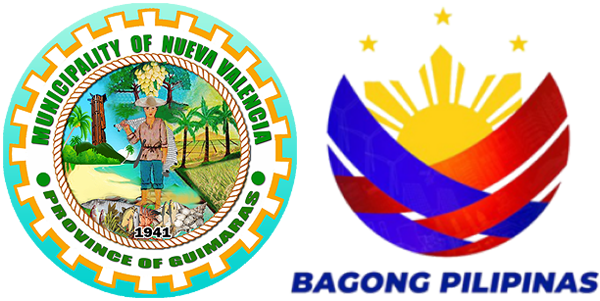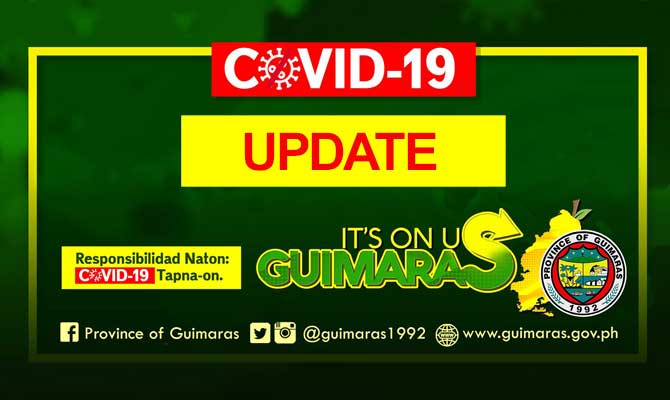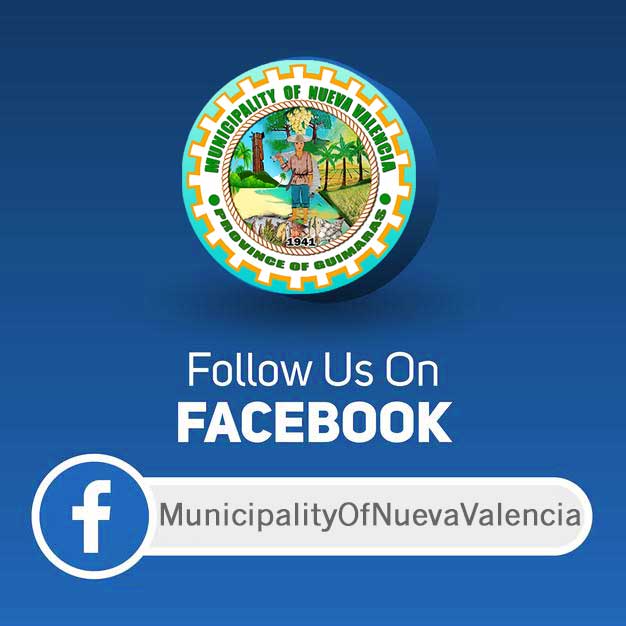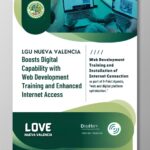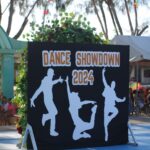The Church and the State
The history of Nueva Valencia, just like that of other towns in the island of Guimaras, dates back to the time when Himal-us (Guimaras) was Christianized by the Spaniards in 1591.
The towns then were known as pueblicitos (villages) of Nayup (Buenavista with San Pedro Apostol as patron saint: Nabilhan (Jordan) with San Juan Bautista as its patron saint; and Agang (Valencia) whose patroness was Santa Ana. Although during the Spanish regime there were separate powers between the church and the state, yet the Church had much influence in the creation of pueblicitos (towns) and establishment of parishes.
It was also mentioned in the “History of Panay” by Regalado and Franco, that in Panay, the towns included under the jurisdiction of the government of Ogtong (Oton) were the three towns in the island of Himal-us, namely: Nayup, Nabilhan, and Agang.
In 1742, the island fell under the jurisdiction of Dumangas until 1751 when the Jesuits took over the Augustinian Order. In 1768, the Dominicans had spiritual jurisdiction over Guimaras until 1775 when it was organized into a regular parish with Iloilo.
How Nueva Valencia Got Its Name
With the coming of the Spaniards, trade and commerce also flourished as Spain opened markets to foreign countries. There was a regular “galleon trade” between Manila and Acapulco. Iloilo at that time was known as the “Fort of the Southern Archipelago”.
Just like at present, the sea route from Manila to Panay passed the western portion of Guimaras, through the Iloilo Strait, and docked at Fort San Pedro. The Spaniards saw the need of a lighthouse to guide the incoming and outgoing vessels especially during dark nights and when typhoon occurred. The suitable place for a lighthouse was in Himal-us (Guimaras).
The group, with some engineers, landed in Puyu which at that time, was the landing point of vessels. They went on foot until they reached a place which is now Sitio Guisi. Such place was ideal for a lighthouse since it could be seen far away from the sea. The Spaniards named the place as Punta Santa Ana in honor of the patroness of typhoon.
A lighthouse was constructed which operates until today.
The Spaniards had come to like the place of Santa Ana which extended from the lighthouse to Sitio Puyu. Eventually, population increased and the Spanish authority created Santa Ana as a town and named it Valencia after a town in Spain which patroness was Santa Ana. The first appointed “alcalde mayor” was Don Manuel Segovia. The municipal building called “Casa Real” was constructed and was located adjacent to the site of now Nueva Valencia National High School. Later, the seat of the municipal government was transferred to Barrio Igang when the casa real was razed by fire due to an unknown cause. Igang then became the Poblacion and the whole town was named Nueva Valencia or “New Valencia”. Valencia became a barrio named San Ana.
On January 6, 1902, under Articulo 1 de la Ley No. 303, directed by the Commission the las Estados Unidos en Filipinas, Martin Teofilo Delgado, the governor of Iloilo, appointed Marcelo Flores as President of the Municipality of Nueva Valencia.
Nueva Valencia Under the Americans
The independence of Nueva Valencia did not last for long. American forces came to the country in 1898 and right after the defeat of the Spanish forces in the Battle of Manila Bay, American warship Newport and Petrel appeared at the Iloilo Harbor in December of that year. A military government was established in Guimaras with the headquarters at Supang, Buenavista. This was the last quarter of 1902.
In 1908, a civil government was established, creating the whole island as one municipality. Buenavista became the seat of the municipal government.
In January, 1918, Jordan separated from Buenavista asn became as independent municipality. Igang which at that time was fast-growing community, became the growth center of Nueva Valencia or the “arrabal” (big place).
The Struggle to Become an Independent Municipality
Due to the wide area covered by the Municipality of Jordan wherein Nueva Valencia was a part, far-flung barrios were neglected. Transportation was scarce and roads were poorly maintained.
Because of this, prominent leaders began a movement for the separation of Nueva Valencia from Jordan under the leadership of Ramon Ortiz, Sr., Alberto Gonzaga, Eusebio Mejica, Eugenio Haro, Fernando Galvez, Jr., Tomas Geonanga, Jose Geraldoy, Sotero and Domingo Granada, Marina Tubeza, Leonor Arazaga, and others, a petition for separation was made and sent to the then governor of Iloilo, Timoteo Consing. However, the first attempt for separation was not successful due to some requirements of the law in the creation of a municipality.
Undaunted by the futility of the first attempt for an independent municipality, new breed of leaders cropped up and continued the struggle for a township. Prominent and militant among them was Simeon Jabasa, who, together with his family, migrated to Nueva Valencia in 1924 for a teaching job.
Finally, the struggle for independence was given a ray of hope. In May, 1938, the late Pres. Manuel L. Quezon issued Executive Order No. 114 granting all big arrabales the right to become independent municipalities. Old folks of San Ana and Igang lost no time in forming a committee for Garganera served as secretary.
On June 19, 1938, more than 2,000 people from the different barrios marched around the plaza of Igang to welcome then Iloilo Governor Tomas Confesor. The governor assured the people of his support to their crusade for an independent municipality.
Immediately, the committee for separation obtained various resolutions for such purpose. The Municipal Council of Jordan passed and approved Res. No. 192 recommending the separation of Nueva Valencia. On June 10, 1940, the Council also appropriated the amount of P200 for the survey of the town boundary and the site of the poblacion where the seat of government would be established.
The Formal Inauguration
On January 1, 1942, the Municipality of Nueva Valencia was formally inaugurated with Florentino Gallopa as the first appoint municipal mayor. A noted Guimaras writer, Abe S. Gonzales wrote:
“In 1941, Nueva Valencia became a town and tragic-comedy unexpectedly happened.
When Mr. Simeon Jabasa, a civic minded leader who worked hard for the separation of Nueva Valencia from Jordan was about to be inducted into office as the first appointed mayor, a telegram arrived from Pres. Quezon which appointed Florentino Gallopa as mayor and withdrawing Mr. Jabasa’s appointment. Mr. Jabasa was a victim of the in-fighting between Rep. Jose C. Zulueta and Governor Tomas Confesor”.
Although it was provided in E.O. 296 that the seat of the new municipality was in Sitio Igbantug, Barrio Santa Ana, however, due to lack of facilities, the offices were temporarily housed at the police station in Barrio Igang.
Nueva Valencia During the Japanese Occupation
On December 30, 1941, just as World War II broke out, the offices of the municipal government were transferred to Barrio Magamay (at the place beside Katilaran River)
On August 27, 1942, the offices were returned to Barrio Igang. The municipal government was organized and administered under the KALIBAPI system. Retired postmaster Benito Garque narrates:
According to former Guimaras Vice-governor Cesar Galila, Nueva Valencia was a peaceful place during the early years of Japanese occupation. It was only later when the tide of war turned in favor of the Allied forces that some isolated atrocities were committed. People in the barrios formed a “ronda” (night watch) to warn the people of the coming of Japanese soldiers. A bolo battalion was secretly formed but instead of a bolo, then common weapon used was a “batuta” (wooden cane). One martial expert in the use of cane (arnis) was Jose Gotera. The other was Felix Gaitan.
Galila also narrated how one Ando Villegas was bound and made to march around the plaza. It was not known what happened to him latr as people were concerned of their own safety.
David Geonanga who was sixteen years old at the Japanese occupation also told his experience.
Old folks also narrated that one Japanese fighter plane dropped a bomb at Sitio Tugpahan, Ilaya Igang but caused no damage. When defeat was imminent, the Japanese resorted to “Juez de cuchillo” that is: anyone suspected to be against them were immediately put to death. One Dr. Fermin Caram Sr. came over to the place and was able to convince the Japanese to stop their atrocities.
Fermin Bungr, now a septuagenarian who resides in Tando, also narrated that a group of Japanese soldiers landed in Sitio Guisi guided by one Gregorio Tacluyan. They burned the house of Florentino Gallopa. However, not much harm was inflicted because the natives had fled to dense forest for safety.
The War Experience of Fermin Bungar
World War II gave a chance to some Guimarasnons, particularly from Nueva Valencia, to contribute to Allied victory in the Philippines in 1944. One of them was Fermin Bungar although few were aware of his deeds.
Interviewed at his residence at Tando, Nueva Valencia, Fermin Bungar relates:
“In the Holy Week of March, 1942, together with Crispin Sabobo, Roberto Galas, Ladislao Gallopa, and Nesio Romero, we were hired by an American named Herndorn to transport him and wife, Ann, to Australia. Herndorn had been a pilot of Lopez family and Ann was a nurse. We boarded the “batil” (sailboat without outtriggers) “Deming” which was built in Iloilo by the American himself for the purpose of sailing to Australia. In our voyage, Nesio Romero was the “timonil” (captain).
The voyage which started at Iloilo City, passed by Tando, then Negros Island; Carmen, Cebu, and to Camotes Island. In Surigao, we came upon ten Americans who were stranded when their navy ship sunk. One was a doctor, another a U.S. Navy Captain, and the rest were enlisted men. In the sea of Surigao, we met a Japanese warship and we dressed ourselves like natives so that the Japanese would not board our batil. Herndorn and Ann hid inside the batil. (I discovered that there were guns and ammunitions stored inside).
After several days of evading the Japanese, we reached New Guinea where we bartered with the natives milk and sugar for our provisions. Eventually, we reached Port Darwin in Australia where there were several American warships. Upon learning that we were the Filipinos who brought the American Herndorn to Australia, we were treated very well. I noticed that the soldiers saluted to Herndorn and I guessed that Herndorn was a military official.
On July 222, 1942, Fermin Bungar and his companion were enlisted with the U.S. Navy. They underwent military training and on the Leyte Landing in Palo Beach in October, 1945, led by Gen. Douglas MacArthur they took part in the beachhead which later on paved the way for the liberation of the Philippines by the American forces and the Filipino guerillas.
Fermin Bungar returned to Nueva Valencia where he married Avelina Delafer. Of the five, only he and Roberto Galas (now a U.S. citizen and residing in America) are alive today. Bungar narrates that he too would have been a U.S. citizen but for the incident that his savings of 500 US dollars was stolen). They were unaware that their war experience had contributed to the liberation of the Philippines. That American Herndorn possibly gave the information to the USAFFE the location of the Japanese forces and that the best point of the Allied invasion was in Palo beach, Leyte.
Fermin Bungar, Army Serial No. 10641022, Technician 1st Sgt., Company A, 1st Fil. Infantry Regiment, received World War II victory medals: Philippine Liberation Ribbon with 2 Bronze Star; Asiatic-Pacific Theater Service Ribbon with 2 Bronze Star; and a Good Conduct Medal. This citation was signed by Robert O. Wright, Col. Cavalry Commanding, New Guinea-Southern Philippines Campaign.
The Post Liberation Period
Peace and order returned to normal when the American liberated the country. Florentino Gallopa assumed office as mayor in 1945 to November, 1949. Ricardo Ortiz succeeded him during the 1949 election. The seat of the municipal government remained in Barrio Igang.
The Issue Regarding the Site of the Municipal Government
During the term of Mayor Ricardo Ortiz, the question of the permanent site of the seat of the municipal government was raised by political leaders. The residents of the north were in favor of transferring it to Igbantog while the people of the sountern barrios were in favor of a status quo. A plebiscite was called for such purpose. Each barrio chose a delegate to vote. Majority voted for the transfer and only one vote from Barrio Igang, cast by Vicente Gaitan, was against.
The offices were moved to Sitio Igbantog, temporarily housed in the residence of Isaac Genesela. It stayed there for one year. In 1951, Typhoon Amy destroyed the building and the offices were again returned to Igang. A semi-concrete municipal building was constructed located at the back of the plaza, in the land donated by Melquiades (Dadi) Flores. Barrio Igang rapidly flourished as residential and commercial building sprouted.
In1956, Antonio Ortiz, who had served as Councilor of Jordan, was elected municipal mayor. David Geonanga was the vice-mayor.
In 1957, the people from the north headed by Benjamin Geonanga succeeded in demolishing the semi-permanent building in Igang and relocated it at Sitio Igbantog where it remains today. A statue of Pres. Ramon Magsaysay stands in front of the municipal building, to remember him as the one who approved the transfer of the seat of the municipal government.
Changes in Political Leadership
From then on, rapid development followed and so with changes in leadership. Antonio Ortiz remained as municipal mayor from 1960 to 1963. In 1964 to 1968, David Geonanga became the municipal mayor and Antonio Ortiz was the vice mayor. Antonio Ortiz was Later appointed Lt. Governor in1966 when Guimaras became a sub-province of Iloilo. Matias Galia took his place as vice-mayor from 1966 to 1968.
In 1968, it was Matias Galia who became the municipal mayor. Mayor Matias Galia held the longest term of mayorship until EDSA Revolution in February, 1986.
During the provisionary government of Pres. Corazon Aquino, all incumbent mayors were removed from office. Instead the local chief executive was appointed as Officer-in-Charge (OIC).
Dr. Edgardo Jabasa, M.D. served as OIC mayor from March, 1986 to June, 1987. He vacated his post for a study grant in Thailand. Taking over Eugenio P. Delumpa who served from June to Nov. 30, 1987. Later, Pres. Aquino proclaimed the holding of a national and local elections and incumbent mayor who wished to run would have to resign from office. To prevent vacancy in the office of the mayor, Jessie Espiso was appointed OIC from Dec. 1, 1987 to January 30, 1988.
Eugenio Delumpa was elected municipal mayor in that election. He served from Feb. 3, 1988 until 1992. He was reelected in the election in 1992 and served until 1995. He was again reelected in 1995 and ended his three consecutive term as mayor in 1998. Prohibited by law to run on the same post. Mayor Delumpa run as Board Member of Guimaras and won in in the said post. Noel Torres became the OIC mayor on April 6, to June 30, 1998.
In the May 11 elections, Diosdado Gonzaga, then the vice mayor of Eugenio Delumpa was elected municipal mayor. He served from June 30, 1998 up to the present administration.
